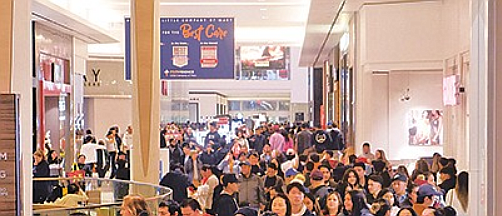Retail Crime At All Time High, According to NRF Survey
RETAIL
As of Wednesday, July 15, 2020
Retail crime, such as theft and online fraud, rose to $61.7 billion in 2019 over the previous year’s $50.6 billion, according to the annual National Retail Security Survey, which was recently released by the Washington, D.C.–based trade group National Retail Federation.
Mark Mathews, NRF’s vice president for research development and industry analysis, said that retail shrink—which includes shoplifting, organized retail crime and employee-theft incidents—is at an all-time high.
“Loss-prevention experts are facing unprecedented challenges from individual shoplifters to organized gangs to highly skilled cybercriminals. Retailers are responding with both traditional methods and the latest technology, but this is an ongoing challenge that can only be won with the support of lawmakers and law enforcement,” Mathews said.
The NRF survey found that shrink averaged 1.62 percent of sales during 2019, which was an increase of 1.38 percent over the previous year. The study was sponsored by Appriss Retail, a Louisville, Ky.–headquartered provider of technology and analytics that examines retail shrink among other fields.
As entrepreneurs build new channels for retail, there are also new opportunities for crime. Surveyors asked 69 loss-prevention executives where new retail crimes were being committed, with this response: 49 percent said the largest increase occurred in bricks-and-mortar stores; 26 percent said the largest increase was in e-commerce; and 19 percent was in omni-channel sales in which a purchase is made online but returned to a bricks-and-mortar store.
Retail crime may have worsened since NRF survey information was collected, said Dr. Read Hayes, co-director of the Loss Prevention Research Team at the University of Florida, and Director of the retailer-supplier coalition Loss Prevention Research Council.
“This study further supports what retailers were reporting. We were seeing thefts go up before COVID-19,” Hayes said. “But there has been a significant jump. Post-COVID, we’re seeing increased theft in stores.” Hayes and his colleagues have been in communication with numerous retail loss-prevention executives.
He did not work on the NRF survey, but he has heard a lot of anecdotal information regarding how retailers have been hurt during COVID, and outbreaks of looting in the past few months. There also has been increase in theft post-riots because Hayes and his colleagues say that sentencing and punishments for shoplifting and organized retail crime have not been properly enforced at the state and local levels.
A December NRF study found that Los Angeles was the city ranked as the first in instances of organized retail crime. The next four top-ranked cities were New York, Houston, Chicago and Miami.
